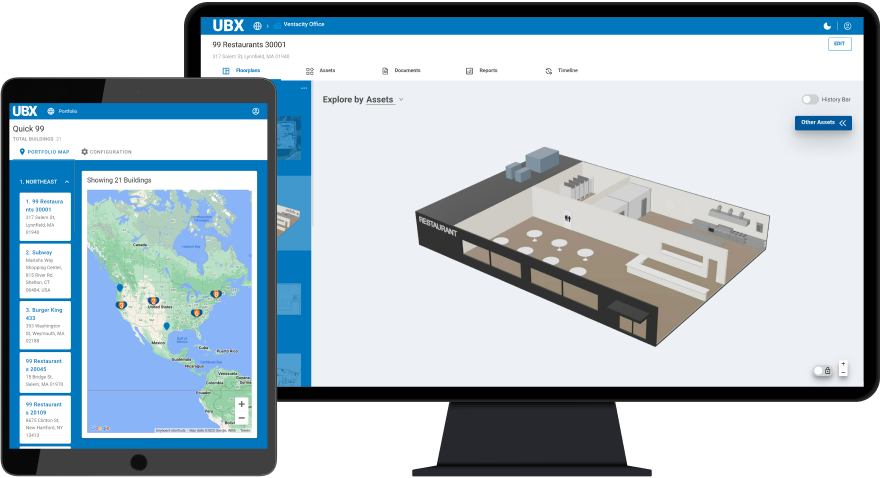UBX helps both sit-down and quick-service restaurants reduce costs, protect food quality, and improve operational efficiency. HVAC (25%), refrigeration (14%), and cooking (49%) account for the majority of a restaurant’s energy use and UBX provides continuous monitoring and real-time alerts across all three.
UBX enables retail operators to maintain comfort, protect merchandise, and reduce operating costs while ensuring every store runs efficiently and securely.
UBX optimizes office environments for tenants and employees with intelligent HVAC control, occupancy insights, and energy-saving tools—all without costly automation systems. HVAC systems account for over 57% of total energy use in office buildings, making it the single largest opportunity for savings and performance improvement.
UBX helps convenience and grocery operators protect inventory, lower operating costs, and maintain consistent in-store comfort. Refrigeration (49%) and HVAC (30%) account for nearly 80% of total energy use, making them the most critical systems to monitor.
UBX empowers manufacturing and warehouse operators to protect production quality, improve safety, and reduce downtime with real-time visibility into critical building and equipment performance.
UBX helps light-commercial healthcare facilities, including doctor’s offices, outpatient clinics, pharmacies, and research labs, maintain safe, compliant, and efficient environments. HVAC accounts for about 55% of total energy use, making it the top opportunity for savings and comfort improvement.
UBX empowers churches and places of worship to reduce costs, improve comfort, and simplify building management. With HVAC accounting for nearly 65% of total energy use, UBX delivers powerful control and insights to manage comfort efficiently while minimizing waste.

UBX equips schools and daycare facilities with the tools to maintain healthy, comfortable, and cost-efficient learning environments. HVAC accounts for roughly 60% of total energy use in educational buildings, and UBX makes it easy to align schedules and setbacks with occupancy patterns maximizing efficiency during long periods of non-use.
